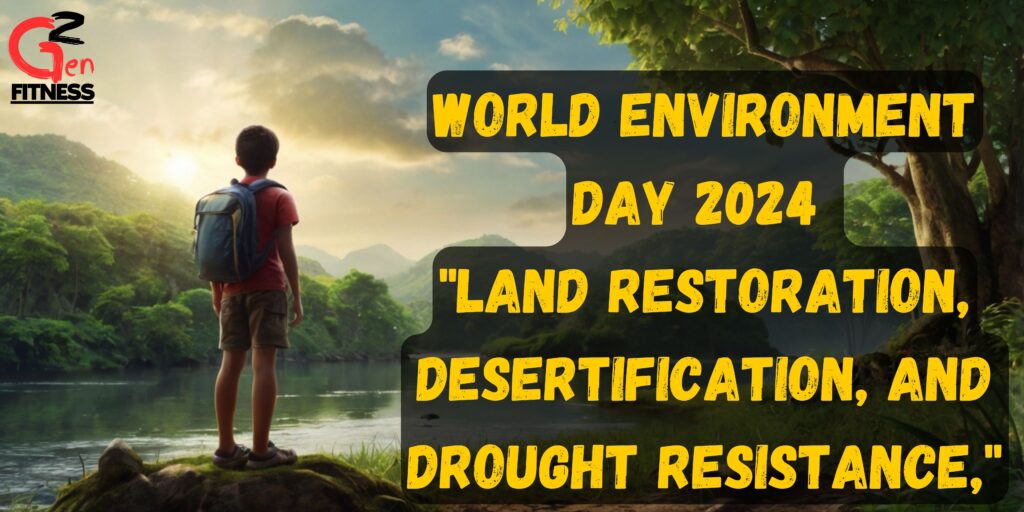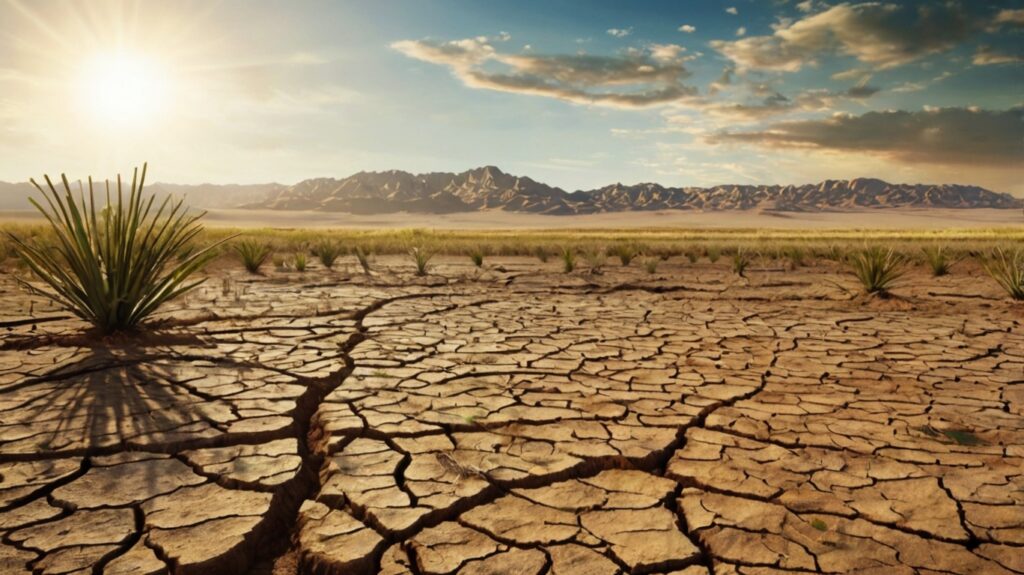
Introduction – World Environment Day 2024
Every year, on June 5th, the world unites to celebrate World Environment Day, a global platform for raising awareness and taking action on pressing environmental issues. Established by the United Nations in 1974, World Environment Day has grown to be one of the most widely recognized days for environmental advocacy. Each year, a different theme is chosen to highlight specific areas of concern. This year, the theme centers around “Land Restoration, Desertification, and Drought Resistance,” a timely and critical focus given the increasing challenges posed by climate change, unsustainable land use, and escalating water scarcity.
The Importance of Land Restoration
Land restoration is a comprehensive process that involves reclaiming, rehabilitating, and restoring degraded lands to productive and sustainable use. It is essential not only for environmental health but also for the well-being of human societies. Degraded land impacts biodiversity, water quality, and agricultural productivity, leading to severe economic and social consequences.
Economic and Social Benefits
Restoring degraded land can significantly boost local economies by improving agricultural yields and creating job opportunities. Healthy soils are the foundation of agriculture, supporting 95% of the food we consume. By restoring land, we enhance food security, reduce poverty, and stimulate economic growth. In addition, restoration projects often require a considerable workforce, thereby generating employment opportunities in rural areas.
Environmental Benefits
On the environmental front, land restoration helps in sequestering carbon, thus playing a crucial role in mitigating climate change. Healthy ecosystems can absorb more carbon dioxide, reducing the overall concentration of greenhouse gases in the atmosphere. Additionally, restored lands improve biodiversity by providing habitats for various species, which in turn supports ecosystem stability and resilience.
Tackling Desertification
Desertification is the process by which fertile land becomes desert as a result of various factors, including climatic variations and human activities. This phenomenon poses a significant threat to millions of people worldwide, particularly in arid and semi-arid regions.
Causes of Desertification
The primary drivers of desertification include unsustainable agricultural practices, deforestation, overgrazing, and poor water management. These activities degrade the soil, reduce its fertility, and make it more prone to erosion. Climate change exacerbates these effects by increasing the frequency and intensity of droughts, making already vulnerable lands even more susceptible to desertification.
Consequences of Desertification
Desertification has dire consequences for both the environment and human populations. It leads to the loss of arable land, which directly impacts food security and livelihoods. Moreover, it contributes to the loss of biodiversity, as plants and animals adapted to specific conditions are unable to survive in degraded habitats. Socially, desertification can trigger migration, conflict over scarce resources, and increased poverty, particularly among communities that rely heavily on natural resources.
Strategies to Combat Desertification
Combating desertification requires a multifaceted approach that includes sustainable land management practices, reforestation, and the use of technology. Sustainable agricultural techniques, such as agroforestry, crop rotation, and organic farming, can help maintain soil fertility and prevent degradation. Reforestation and afforestation projects restore vegetation cover, which stabilizes the soil and enhances its water retention capacity. Additionally, technological innovations, such as remote sensing and geographic information systems (GIS), can monitor land conditions and guide restoration efforts.
Enhancing Drought Resistance
Drought resistance refers to the ability of ecosystems and human communities to withstand and recover from drought conditions. With climate change increasing the frequency and severity of droughts, enhancing drought resistance is more critical than ever.

Impact of Droughts
Droughts have a profound impact on water availability, agriculture, and human health. They lead to water scarcity, affecting drinking water supplies and sanitation. In agriculture, droughts reduce crop yields and livestock productivity, threatening food security and farmers’ incomes. Furthermore, prolonged droughts can cause malnutrition, heat-related illnesses, and increased mortality rates, particularly in vulnerable populations.
Building Drought Resistance
Building drought resistance involves a combination of proactive planning, sustainable water management, and the adoption of resilient agricultural practices. Key strategies include:
- Water Conservation and Management: Efficient water use, rainwater harvesting, and the development of water storage infrastructure are essential for ensuring water availability during drought periods. Technologies like drip irrigation and smart water management systems can significantly reduce water wastage.
- Drought-Resistant Crops: Breeding and cultivating drought-resistant crop varieties can help maintain agricultural productivity under dry conditions. These crops are often more resilient to water stress and can thrive with minimal water.
- Ecosystem Restoration: Restoring natural ecosystems, such as wetlands and forests, enhances their ability to regulate water cycles and store water. Healthy ecosystems act as natural buffers against drought by retaining moisture and releasing it slowly over time.
- Community Engagement and Education: Engaging local communities in drought preparedness and response planning is crucial. Educating farmers and residents about sustainable practices and water conservation techniques empowers them to take proactive measures.
Global Initiatives and Success Stories
Several global initiatives and success stories highlight the effectiveness of land restoration, desertification control, and drought resistance efforts.
The Great Green Wall Initiative
The Great Green Wall is an ambitious project aimed at combating desertification in the Sahel region of Africa. Stretching across 8,000 kilometers, this initiative involves planting trees and restoring degraded land to create a green belt that can halt the advance of the Sahara Desert. Since its inception, the project has restored millions of hectares of land, created jobs, and improved food security for local communities.
China’s Loess Plateau
China’s Loess Plateau, once severely degraded and eroded, has undergone a remarkable transformation through extensive land restoration efforts. By implementing terracing, reforestation, and sustainable agricultural practices, the region has seen a significant increase in vegetation cover, improved soil fertility, and enhanced water retention. These efforts have not only revived the local ecosystem but also improved the livelihoods of millions of residents.
India’s Water Conservation Efforts
In India, community-led water conservation initiatives, such as those in Rajasthan and Maharashtra, have demonstrated the power of local action in building drought resistance. Techniques like rainwater harvesting, check dams, and watershed management have revitalized groundwater levels, improved agricultural productivity, and made communities more resilient to droughts.
The Role of Policy and International Cooperation
Addressing land degradation, desertification, and drought resistance requires strong policy frameworks and international cooperation. Governments, international organizations, and civil society must work together to implement policies that promote sustainable land management, invest in restoration projects, and support research and innovation.
Policy Recommendations
- Incentives for Sustainable Practices: Governments can provide financial incentives, such as subsidies and tax breaks, to encourage farmers and landowners to adopt sustainable land management practices.
- Integrated Land Use Planning: Developing comprehensive land use plans that balance agricultural, industrial, and conservation needs can prevent overexploitation and degradation of natural resources.
- International Agreements: Strengthening international agreements, such as the United Nations Convention to Combat Desertification (UNCCD), can enhance global cooperation and ensure the effective implementation of restoration and drought resistance strategies.
- Research and Innovation: Investing in research and development of new technologies and practices is crucial for advancing land restoration and drought resistance. Collaborative efforts between governments, academia, and the private sector can drive innovation and scale up successful solutions.
Conclusion
World Environment Day 2024, with its focus on “Land Restoration, Desertification, and Drought Resistance,” underscores the urgent need to address these interconnected challenges. Restoring degraded lands, combating desertification, and building drought-resistant communities are not only environmental imperatives but also vital for ensuring food security, economic stability, and human well-being. Through concerted efforts, innovative solutions, and global cooperation, we can make significant strides towards a more sustainable and resilient future. Let us take this World Environment Day as an opportunity to reaffirm our commitment to protecting and restoring our planet for generations to come.
Read our latest articles – https://genzfitness.in/
Best Invest App – Groww
